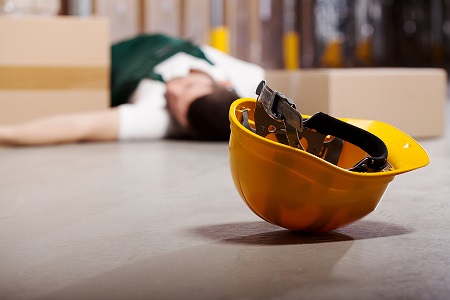Each requires additional effort and expenditure on your part, but few things are more costly - both to your people and your bottom line - than a serious workplace injury.
Aside from the trauma for the person concerned and their family, staff morale can be greatly affected, as can your bank balance if the accident leads to industrial action. So here are three ways you can greatly enhance the wellbeing of your employees and build a safety record to be proud of.
Create safety by design
Imagine for a moment that your factory is a V8 Supercar. Like your business, it's designed for performance and to compete with other similarly appointed cars. However it would be a tragic failure if it wasn't for another equally critical design factor – safety. Brakes, seat belts, air bags, roll cage; all integral to that car's ultimate performance. Plant design and layout, lighting, temperature, production line equipment and processes, the competence of your workers; all integral to yours.
Like that V8 Supercar, you need to know that your business has the right brakes and seat belts in place when it's operating at full pace. If you're a startup business, that's easier to do as your entire structure can be designed from the ground up.
If you are an existing manufacturer with potential safety concerns, have your business assessed for roadworthiness by an industry health and safety inspector who can identify your hazards and risks. It may cost you in the short term, but it could save not just your business, but lives in the long term.
Give your workplace a weekly grease and oil change
This is effectively your ongoing service schedule once your hazard management and safety modifications are in place. But rest assured, it's an inexpensive, largely factory floor approach to your ongoing business well being. For a start, it does, quite literally, mean walking around the factory floor listening to worker concerns.
Some will share their problems. Others just want to keep their jobs. So listen to what they share or just observe what they have to deal with, be it at close range or more covertly from afar. It may be something as simple as a tall person working at a low bench or something potentially more damaging such as a tired worker or, worse a disruptive worker. Are your workers getting breaks when they're supposed to? Are people there to take their place?
Observe how your whole production line is working from a more mechanical point of view. Are your workers comfortably dealing with any computerised machines you have in place or struggling to keep up? Is your workplace hazard and reporting data pinpointing any potentially dangerous trends? Are previously implemented hazard controls operating as they should?
Look in places where problems can creep up: areas where impact, vibration, heat, corrosion, chemical reaction or misuse may be occurring. And don't forget those supposedly safe places away from the coalface – access doors, rest areas, lunch rooms, storage rooms, car parks – they can all malfunction in their own way and you will be responsible.
Support your workers through personal difficulties

Any worker struggling through a tragedy or some other personal circumstances is potentially a dangerous worker. If they aren't focussed on the job at hand, they are a danger to themselves, not to mention those working around them.
Change within the workplace, such as new technology or relocation, can also negatively affect worker morale and lead to disinterested and possibly unsafe work performance.
As a manufacturer you can minimise the risk of such circumstances leading to injury by firstly being aware of general and individual morale. Take an interest in your workers so they are comfortable sharing any misfortune. Encourage all your staff to look out for each other and be on top of any sudden changes in mood or performance among their co-workers. Then, if a potential danger is identified, you need to be able to respond quickly.
Early intervention and frank discussion can clarify the risk before a mishap occurs. The affected worker can then be either cleared to continue work, reassigned to a less hazardous part of the plant, or given leave.
Creating a mentally open and healthy work environment reduces the chance of on-the-job injuries and enhances productivity.
Find safety equipment suppliers and solutions
Safety training and courses
Safety consultants and certifiers


